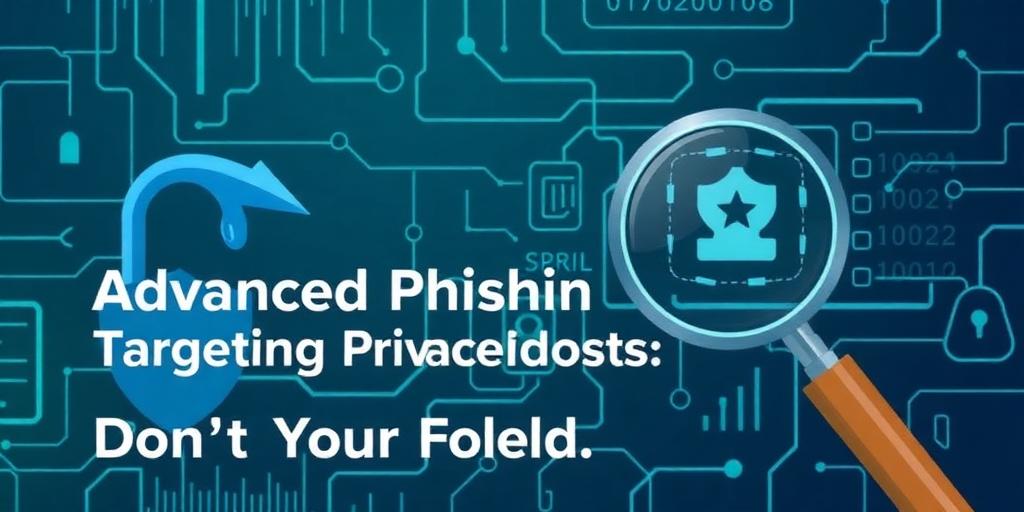Advanced Phishing Scams Targeting Privacy Advocates: Don't Get Fooled
In an era where digital privacy is increasingly valued, privacy advocates find themselves not only defending their own rights but also educating others about online safety. Ironically, this dedication makes them prime targets for sophisticated phishing scams. These scams are becoming increasingly intricate, preying on the very principles of vigilance and awareness that privacy advocates champion. This article delves into the anatomy of these advanced phishing techniques and provides actionable strategies to protect yourself.
Understanding the Evolution of Phishing
Phishing has evolved far beyond the rudimentary emails of the past. Today's attacks are highly personalized and leverage social engineering to create a sense of urgency or trust. Scammers meticulously gather information from social media, professional networks, and even data breaches to craft compelling narratives. For privacy advocates, this might involve:
- Referencing Specific Privacy Tools: Mentioning tools like Signal, Tor, or VPNs to establish credibility.
- Impersonating Known Figures: Posing as leaders in the privacy community or representatives from reputable organizations.
- Exploiting Current Events: Using news about data breaches or policy changes to create a sense of urgency.
Common Tactics Employed by Scammers
1. Spear Phishing: This involves targeting specific individuals with customized messages. For a privacy advocate, this could be an email claiming to be from a colleague seeking urgent help with a privacy-related issue. The email might contain a malicious link or attachment designed to steal credentials or install malware.
2. Watering Hole Attacks: Scammers compromise websites frequented by privacy advocates, such as forums or blogs. By injecting malicious code into these sites, they can infect visitors' devices without requiring direct interaction.
3. Credential Harvesting: This involves creating fake login pages that mimic legitimate websites. Privacy advocates might receive an email prompting them to update their account information for a service they use, leading them to a fraudulent page designed to steal their credentials.
4. Social Media Scams: Scammers create fake profiles on social media platforms to impersonate privacy advocates or organizations. They might use these profiles to spread misinformation, solicit donations, or trick users into clicking malicious links.
Real-World Examples
- The "Encrypted Message" Scam: A privacy advocate receives an email claiming to contain an encrypted message from a trusted contact. The email prompts them to click a link to decrypt the message, but the link leads to a phishing site that steals their login credentials.
- The "Privacy Tool Update" Scam: An email impersonates a popular privacy tool provider, urging users to update their software to address a critical security vulnerability. The update link directs users to a malicious website that downloads malware onto their devices.
- The "Data Breach Notification" Scam: A privacy advocate receives an email claiming to be from a company that recently experienced a data breach. The email prompts them to take immediate action to protect their account, leading them to a phishing site that steals their personal information.
How to Protect Yourself
- Verify the Source: Always double-check the sender's email address and contact information. Be wary of emails from unknown senders or those with suspicious domains.
- Examine Links Carefully: Hover over links before clicking to see where they lead. Avoid clicking on links in emails or messages if you are unsure of their legitimacy.
- Enable Two-Factor Authentication (2FA): 2FA adds an extra layer of security to your accounts, making it more difficult for scammers to gain access even if they have your password.
- Keep Software Updated: Regularly update your operating system, web browser, and security software to patch vulnerabilities that scammers can exploit.
- Use a Password Manager: Password managers generate strong, unique passwords for each of your accounts and store them securely. This reduces the risk of password reuse and makes it more difficult for scammers to compromise your accounts.
- Be Skeptical of Urgent Requests: Scammers often try to create a sense of urgency to pressure victims into acting without thinking. Be wary of emails or messages that demand immediate action or threaten negative consequences.
- Report Suspicious Activity: If you receive a phishing email or encounter a suspicious website, report it to the appropriate authorities, such as the Anti-Phishing Working Group (APWG) or the Federal Trade Commission (FTC).
Conclusion
As phishing scams become more sophisticated, it is crucial for privacy advocates to stay vigilant and informed. By understanding the tactics employed by scammers and implementing proactive security measures, you can protect yourself from falling victim to these malicious attacks. Remember, a strong defense is the best offense in the ongoing battle against phishing.









